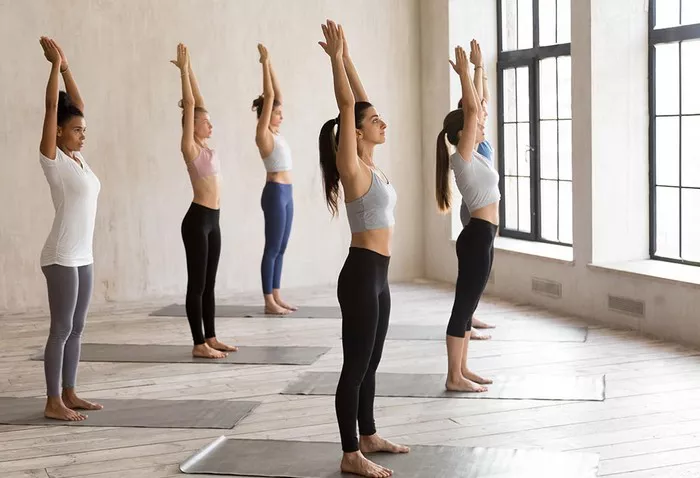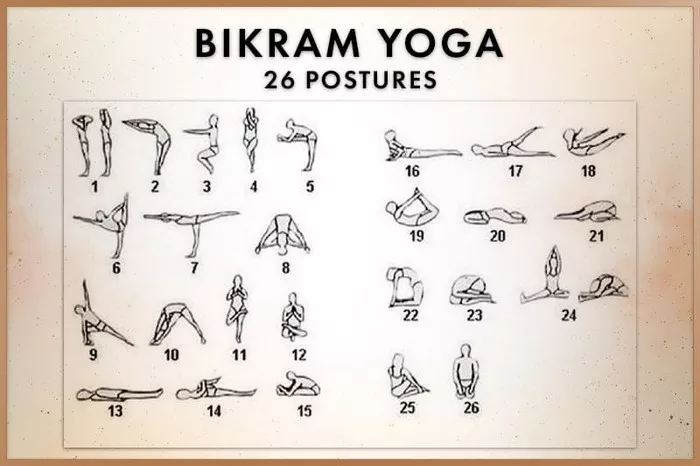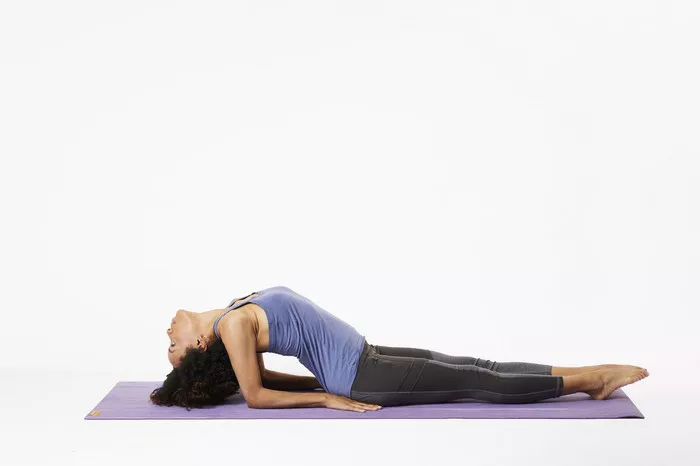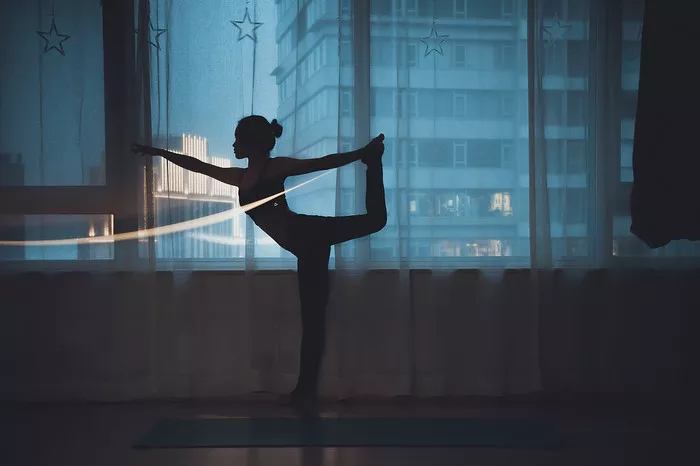Yoga, an ancient practice rooted in mindfulness and bodily awareness, offers a multitude of postures or asanas. Among these, standing yoga asanas form the foundation of many yoga practices. These poses not only cultivate balance and stability but also enhance strength and flexibility. In this article, we delve into the specifics of five fundamental standing yoga asanas, offering precise guidance on their execution and alignment.
1. Tadasana (Mountain Pose)
Tadasana, also known as Mountain Pose, serves as the cornerstone of standing yoga postures. It embodies stability, alignment, and rootedness, akin to a mountain standing tall amidst the landscape. To perform Tadasana:
- Begin by standing tall with your feet hip-width apart, distributing weight evenly on both feet.
- Engage your thigh muscles and lift your kneecaps, ensuring a slight activation in your core.
- Lengthen your spine, drawing your shoulders down and away from your ears.
- Extend your arms alongside your body, palms facing inward, fingers actively reaching towards the ground.
- Gaze softly forward, maintaining a steady breath.
2. Virabhadrasana I (Warrior I Pose)
Virabhadrasana I, or Warrior I Pose, embodies strength, courage, and focus. This pose strengthens the legs, opens the hips, and cultivates a sense of inner power. To practice Virabhadrasana I:
- Begin in Tadasana, step your right foot back, keeping it at a 45-degree angle.
- Bend your left knee, ensuring it aligns directly over your ankle, forming a right angle.
- Ground the outer edge of your right foot firmly into the mat, straightening the leg while maintaining stability.
- Inhale as you lift your arms overhead, palms facing each other, with a slight bend in your elbows.
- Engage your core muscles and lengthen your tailbone towards the ground.
- Gaze forward or up towards your hands, maintaining a steady breath.
3. Utthita Trikonasana (Extended Triangle Pose)
Utthita Trikonasana, commonly known as Extended Triangle Pose, focuses on stretching and strengthening the entire body, particularly the legs, hips, and spine. This pose promotes stability and expansion while enhancing overall flexibility. To practice Utthita Trikonasana:
- Begin in Tadasana, then step your feet wide apart, around 3 to 4 feet distance.
- Rotate your right foot outwards at 90 degrees and the left foot slightly inward.
- Extend your arms parallel to the ground, shoulder-height, palms facing down.
- Inhale deeply, lengthening your torso, then exhale as you hinge at your right hip, reaching your right hand towards the ground or a block.
- Simultaneously, lift your left arm towards the sky, stacking your shoulders vertically.
- Keep your legs engaged and straight, pressing firmly into the outer edge of your left foot.
- Maintain a neutral neck position or gently turn your gaze towards your left hand.
4. Vrksasana (Tree Pose)
Vrksasana, often referred to as Tree Pose, embodies balance, stability, and grace. This standing pose challenges both physical and mental equilibrium, while also enhancing concentration and focus. To practice Vrksasana:
- Begin in Tadasana, rooting down through your left foot.
- Shift your weight onto your left foot and lift your right foot off the ground, placing the sole against the inner left thigh or calf, avoiding the knee joint.
- Engage your core muscles to maintain stability and lengthen your spine.
- Bring your hands together at your heart center in a prayer position or extend them overhead, palms facing each other.
- Find a focal point to steady your gaze, aiding in concentration and balance.
- Hold the pose for several breaths, then switch sides to balance both sides of the body.
5. Ardha Chandrasana (Half Moon Pose)
Ardha Chandrasana, or Half Moon Pose, combines strength, balance, and flexibility, while also stimulating a sense of expansion and openness. This pose energizes the entire body, particularly the legs, hips, and spine. To practice Ardha Chandrasana:
- Begin in Utthita Trikonasana (Extended Triangle Pose), with your right foot forward.
- Shift your weight onto your right foot and lift your left leg parallel to the ground.
- Place your left hand on your left hip for support and stability.
- Inhale deeply, then exhale as you begin to hinge at your right hip, simultaneously extending your left leg straight back behind you.
- Engage your core muscles to maintain balance, while also activating the muscles of the standing leg.
- Extend your right arm towards the ground, using a block for support if needed, and lift your left arm towards the sky, stacking your shoulders.
- Gaze softly towards your left hand or up towards the sky, finding a focal point for balance.
Conclusion
Mastering the fundamentals of standing yoga asanas lays a strong foundation for a fulfilling yoga practice. By understanding the precise alignment and execution of these poses, practitioners can enhance physical strength, mental focus, and overall well-being. Incorporating these asanas into your daily routine fosters a deeper connection between mind, body, and spirit, paving the way for a more balanced and harmonious life.
























